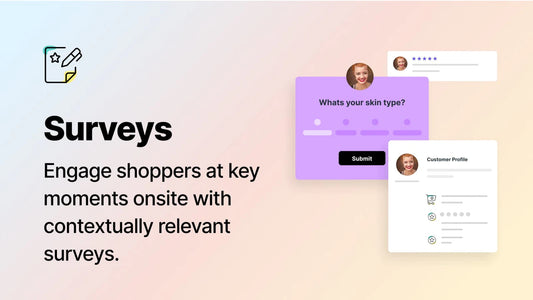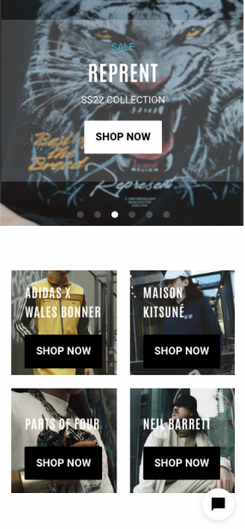E-Commerce marketing is a lot more complicated than just placing an advertisement on the internet. It's about knowing your target audience and understanding what they want from you, then providing it to them in a way that will make them want to buy from you.
While marketing giants are turning to the internet as their primary source of advertising and sales, small businesses aren’t too far behind. In fact, small businesses are reaping as many rewards by paying attention to the top e-commerce marketing strategies.
What is an e-commerce marketing strategy?
E-Commerce marketing is a broad topic with many different facets. But let’s start with the most important aspect of your strategy. Your goal in developing an e-commerce strategy is to drive traffic to your brand, which ultimately increases the potential to convert traffic into sales. By doing so, you’re also growing your online presence and brand visibility.
Because every brand’s target audience and product ranges, several different tactics work in their own unique way. Brands need to develop the right strategy and customise it to the likings of their audience. This can be achieved by focusing on customer acquisition through social media, search engines, affiliate marketing, digital content and e-commerce email marketing strategies.
While there are plenty of online marketing strategies to adopt, it all comes down to establishing an effective plan designed with intention. Creating an underlying structure is what is going to boost your business by attracting visitors, generating leads, closing deals and converting customers into returning customers.
What are the best marketing strategies for e-commerce?
An e-commerce marketing strategy is essential in optimising online stores for customer conversion rates and sales. We explore the top marketing strategies for 2022.
Include reviewsWe don’t need to tell you twice how competitive the e-commerce industry is. In today's world of online marketing, a company's online reputation can make or break its success. One way that companies build their online reputation is through customer reviews. Reviews help to show what customers think about a product and service, which in turn influences other potential customers' decisions to buy from the business.
Statistics show that 93% of shoppers use the internet to find products. And of those users, 73% of customers pay attention to the reviews written in the last month. Only 43% of customers would buy a product with less than 4 stars.
As online shopping continues to grow, you can’t deny how important reviews will be for your business. E-commerce strategies to encourage customer reviews would include:
- Automating the ‘ask for a review’ response
- Making leaving a review as simple as possible
- Providing templates for reviews
- Offer an incentive
- Follow up requests
Influencer marketing holds a big space in the world of e-commerce, and it continues to grow, even for B2B businesses. Brands have the power to leverage their credibility through influencers, increase engagement rates and enjoy an impressive ROI.
When it comes to influencer marketing, there are a few tips and tricks for adopting a successful e-commerce influencer strategy:
- Does the influencer have an audience that is relevant to your customers?
- Does the influencer have real or fake followers?
- Can you afford to work with an influencer?
- Does the influencer's values align with your brand image?
- Will the influencer enjoy using your products and advertising your services?
Take advantage of Google shopping ads
As soon as a user has pressed enter on the Google search bar to buy a product, they’re presented with a collection of a visual image of the product they have in mind. And when they click on a product that’s caught their eye, they’re automatically sent to the seller’s site.
Marketers know that they can’t miss prime shelving on the SERPs by not taking advantage of Google shopping ads.
The CTR of shopping ads depends heavily on the product you’re selling. Research indicates that shopping ads were extremely well for industries that are driven by visual appearance. So you’ll find that automotive, clothing and beauty, travel and luggage and educational supplies have the highest CTR because they’re all industries that rely heavily on how the products look.
Implementing Google shopping ads is extremely easy on platforms like Shopify and Woocommerce.
Meta (Facebook) is here to stay
Meta is the world’s largest social platform, and with that, comes a world of potential for international marketing! While the sudden name change may have brought some fears of the platform dampening, Meta has introduced new ways for marketers to sell their products online and reach more customers.
Key features of using Meta include:
- Personalised shop ads
- Customer reviews
- AR Try-On Features
The company claims that 74% of its users use the platform to discover new products and brands. As well as using Meta to explore new products, Whatsapp, also owned by Meta, allows customers to browse their entire product range through the chat platform.
In 2022, marketers should assume that Meta will continue to dominate social platforms that successfully market brands.
Optimise for voice assistance
Long-tail keywords are your best friend when it comes to answering search queries based on voice assistance. More and more shoppers are using voice assistance to find the products they’re looking for, and when brands target these long-tail keywords, they’ve got an advantage over stealing leads. Voice assistance shopping is proving to be more convenient for shoppers as it removes the need to navigate complex visual menus.
While this is something to keep an eye on for 2022, marketers are still experiencing challenges of how best to understand the data because there aren’t enough tools out, just yet.
Create a fully mobile-optimised experience
Google Core Web Vitals indicate that your website’s speed has become a super important part of your site’s ranking. And with mobile traffic becoming ever more important, optimising your mobile speed and design should be one of the top priorities amongst e-commerce marketers.
If you get site speed right, you’ll increase your traffic and conversion rate, CTR and site’s visibility. One of the major reasons for this is the improvement in your Bounce Rate (BR). According to recent research, 1 in 4 users will leave a site if the loading time exceeds 4 seconds, and 46% of users won’t revisit a site if the speed is performing slowly.
Marketing automation increase your growth
Marketing automation is the backbone of a successful marketing campaign. Marketing automation increases your conversion rates by automating tedious tasks, such as sending follow-up emails to increase your brand exposure and grow your business.
Use your customers to drive traffic
Customers are the latest social currency. If you want to drive traffic to your website, you need to use your customers as a resource.
By engaging with them and getting them to share your content, you can reach new audiences and get more eyes on your site. Asking your customers to share or promote your content means you can tap into their networks and reach new audiences. In addition, customer referrals are among the best forms of marketing, as they are considered highly trustworthy.







